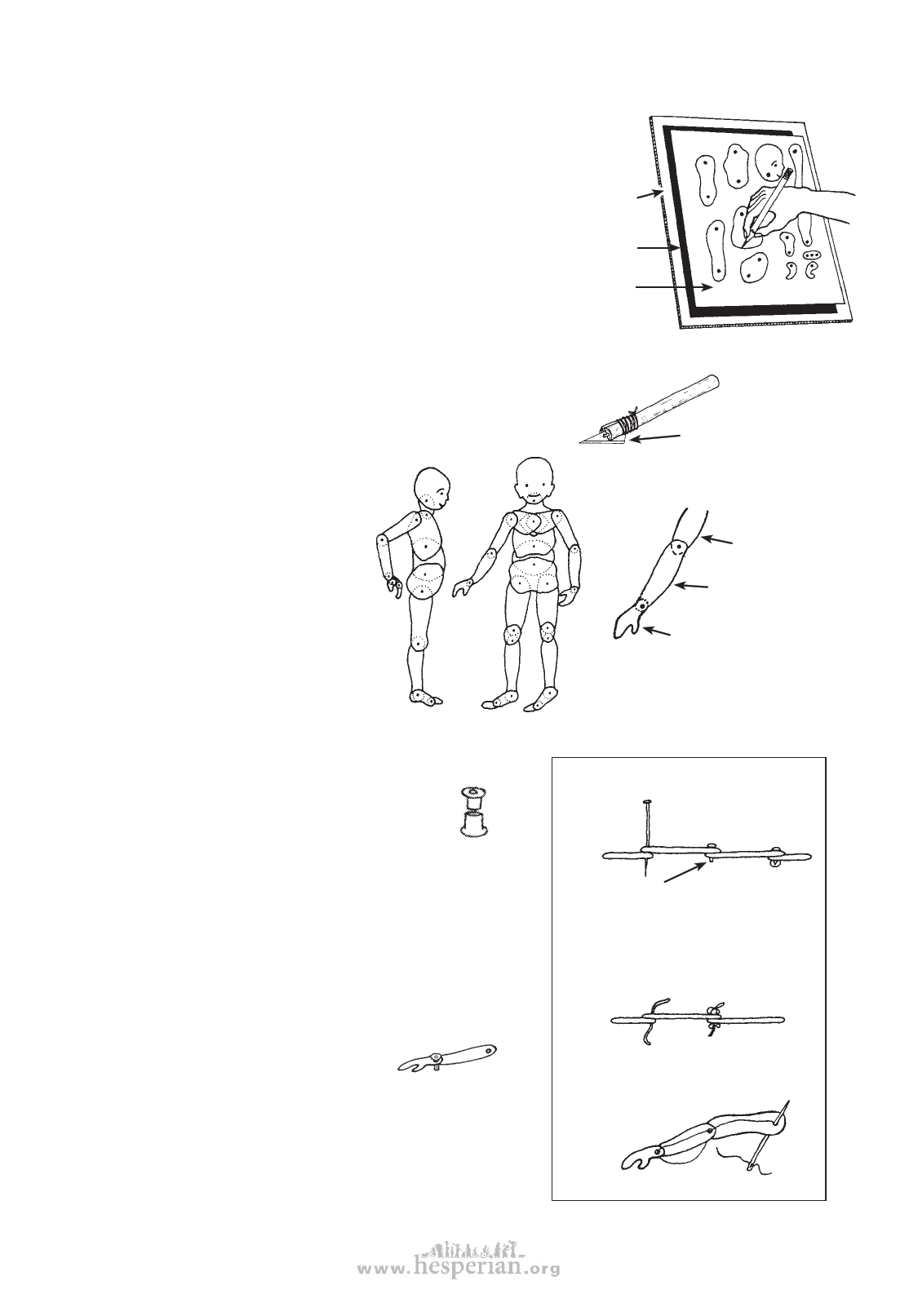
FLEXIKIN 45
How to make the flexikins
1. Trace the patterns of different pieces (p. 47 and 48) onto very
thick paper or thin, firm cardboard. Or use old X-ray film.
You can do this using carbon paper. (Make your
cardboard
own carbon paper by completely blackening a sheet
of paper with a soft-leaded pencil.)
carbon paper
Or you can glue a copy of the pattern sheet directly
to the cardboard.
pattern
sheet
(If your program plans to make many flexikins, or have children
make them, we suggest you have the patterns printed or
photocopied directly on sheets of thin, firm cardboard.)
2. Cut out the pieces with strong scissors, shears, or a
piece of razor blade.
3. Place the pieces together as
shown in the drawings.
Make sure the pieces that
overlap with dotted lines go
behind those with complete
lines.
4. Fasten the pieces together
at the black dots with metal
or plastic rivets, sewing
thread or yarn, or sewing
pins.
piece of razor blade in
the split end of a stick
Put this piece
behind this piece,
and put this piece
behind this.
Metal or plastic rivets usually work best.
For metal rivets: Use the smallest metal
rivets you can find. First punch a hole
through each black dot. Put the rivets
through and hammer them just enough
so that the cardboard joints are tight enough to
hold their position but can be moved without
tearing.
For plastic rivets: Use small pieces of plastic cut
from a plastic drinking straw, or a plastic knitting
needle or crochet hook. A drinking straw will be
easier to use, but make sure it is made from plastic
and not paper. Put small pieces of the plastic into
each hole you have punched. Then
use a lighted candle to heat a knife
or metal blade to press and melt
the plastic so it will get soft, spread, and hold the
cardboard pieces together. Do not melt it too much
or the 2 pieces of cardboard will stick together and
you will not be able to move the flexikin ‘joint’.
Or use sewing pins
Cut here and put a
drop of very strong
glue (like epoxy) here.
Or use thin wire or string
and tie knots.
Or string the joints together
with thread or yarn (this
does not work
as well).
disabled village children